We left Enoch’s house at 7.30am, headed for Magadi, where the Lale’enok Resource Centre was located. It was to be our home for the next 6 days, and is a community based resource centre owned by the Maasai women of Olkiramatian and Shompole group ranches. This section of the trip was a marked departure from earlier parts, for we were able to meet and shadow the many researchers, community scouts and resource assessors who worked there for a longer period of time.
Before we reached the resource centre, however, we were welcomed by the breathtaking sight of Lake Magadi. The lake is an example of a saline, alkaline lake, found in the Kenyan Rift Valley. Flamingos were abound, and we could see many pink flocks feeding on the blue-green algae that thrived in the lake.
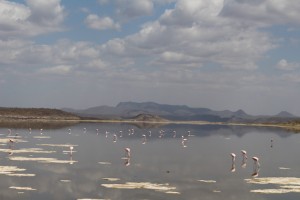
On reaching the resource centre, we were greeted by Guy Western, coordinator of Rebuilding the Pride, one of the flagship projects of the resource centre. While the name of the project is somewhat of a misnomer, considering that lion numbers in the conservancies have been increasing even before the establishment of the project, it is undoubted that the project, which aims to promote ‘coexistence between predators and people in the South Rift’, has facilitated the rapid growth in recent years.
Many different methods are used to track and monitor the lion-community situation. First and foremost, GPS collars are used to track the movements of prides in the region. Additionally, around 5 camera traps have been deployed throughout the conservancy to give a better picture of the current situation on the ground. This is combined with cooperation with local community scouts, each with their designated walking blocks (each 4 x 2 km), where they observe the position and direction of animal tracks, such as hyenas or lions on a daily/weekly basis. This information is not only combined with the research being done in Rebuilding the Pride, but is also communicated to the locals living in the various bomas, so they know where to avoid letting their livestock graze, and be more prepared for any predator attack especially in the night.
One of the highlights for this segment was when we were able to set up 7 camera traps around the conservancy, as a taster of the research that is being done. I was quite enthused because we would be able to analyse the data we collected, and get an insight on the pros and cons of this data collection method.
Things got way more exciting, however, when a lion decided to observe what we were doing 20m away on a tree while we were setting up the 4th camera trap. Being hopelessly curious, Tom exclaimed ‘Where?’ and started to look for it while the rest scrambled back into the Land Cruiser. I had to point out that even our local Maasai guides were running back into the vehicle before he clambered in.
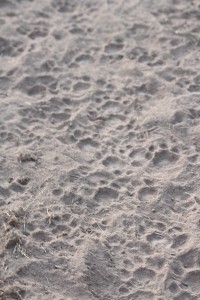
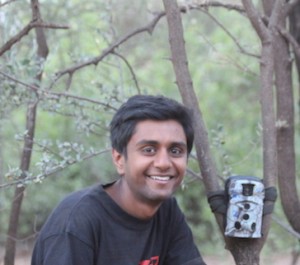
Of course, realistically these short few days we were there limited the research questions we were able to ask and answer from the data we collected. Despite this, we did capture glimpses of lions, hyenas and other predators, a proof of the biodiversity present. (see:LINK) for a selection of camera traps photos)
Guy also allowed us to observe how he tracks collared lions and does call-ins, which he uses to conduct a yearly population census. We used an H antenna to track a VHS collared lioness, Namunyak. When we arrived near where she was, she seemed to be stalking a herd of zebra, possibly looking for a kill. It was all pretty exciting, and the tension built up as she crept closer to the herd, with the zebras seemingly unaware. While everyone held their breath in anticipation, however, she suddenly flopped down on the ground, killing any hopes that we would witness a kill. She became so comfortable that she even slept with one leg raised. While it isn’t something you see every day, I was still pretty disappointed. I’d rather see a kill than a lioness in a weird sleeping position.
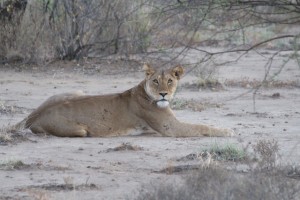
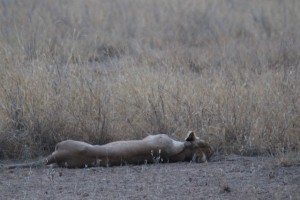
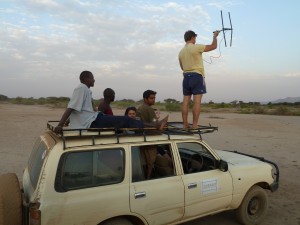
The next morning, we joined Cisco on a baboon walk. The night before, we were told that we would be able to get extremely close to the baboons, possibly even 2-3m away. While this did not happen in the end, we did have very good close-up views of them. Juveniles played with one another without care, and mothers carried their young towards the safety of trees. I really like the idea of this project, as it not only brings revenue to the community, but allows visitors to have a more intimate understanding of baboons, one of the key species in the conservancy.
That afternoon, we visited a local Maasai village – a much more ‘authentic’ experience than the one we had in the Maasai Mara, and we managed to get a good insight into how the Maasai in this area were adapting to the changing cultural and social environment. We visited in the evening time, as the livestock were being brought back into the boma for the night, and even attempted milking a goat (with varying levels of success).

Another day, we crossed over the border to Tanzania to visit Lake Natron – and it was spectacular. A desolate moonscape with a massive, still lake fringed with flamingoes, completely unspoilt (and hopefully will remain that way, as the planned Soda Ash factory is on hold or cancelled, for now)
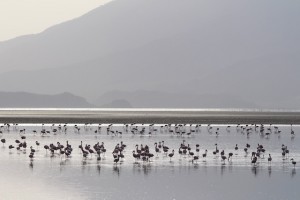
However, since we were at Magadi, it was imperative that we also visit the Lake that gave the area its name. While the rest of us were mesmerised by the natural beauty in front of us, Tom was preoccupied with the beauty beside him. Gwen is a Masters student from Yale, and she is currently doing a project on hornbills, or as Bhavik would put it, “BIRDS!” Having a shared interest in Avifauna, Tom and Gwen hit it off immediately, lost in conversation after introductions. While everyone else sat around at the dinner table, silently eating fruit, the pair obliviously carried on with their discussion on something to do with birds (or frogs, or snakes, or some obscure mammal – we can’t be sure). It was thus of no surprise when Gwen readily accepted our invitation (mostly Tom’s) to come along and visit the lake in order ‘to see some birds’ (smooth move, Tom).
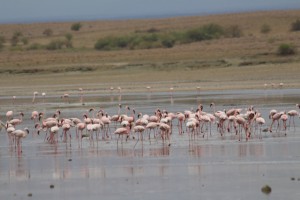
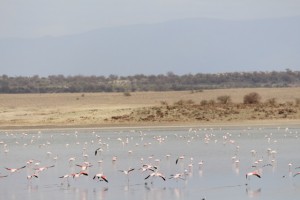
So while the rest of us walked around trying to get good photos of the beautiful flamingos, Gwen and Tom hung around at the back, setting up their scopes as far away from the group as possible, ostensibly to get a view of the birds in the area. They were so absorbed in the sights around them (or was it just the closeness between one another?) that they were reluctant to move on to the hot springs, even after the whole group was already back in the vehicle.
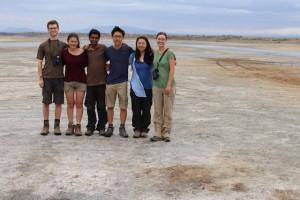
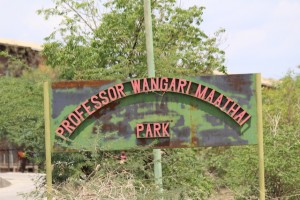

Alas, all banquets must come to an end, and Tom had to say good bye when we arrived back at the campsite. It is said that the two had an early morning walk the next day ‘to look at more birds’, but we can’t confirm. It is only known that Tom had a particularly sad face when we left the place, a hint that he would particularly miss something or someone. Perhaps it was just the prospect of not being able to ‘see birds’ again. We will never know.
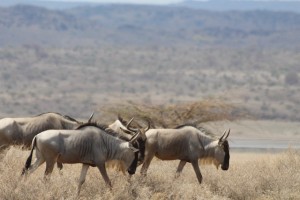

Some photos taken in Shompole and Olkirimatian Conservancies
By Brendan Tan
Photo credits: Bhavik

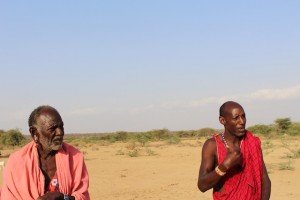

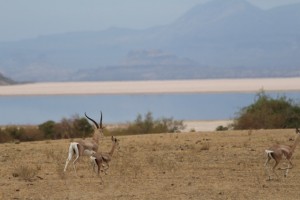
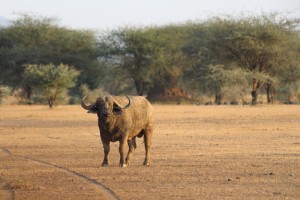
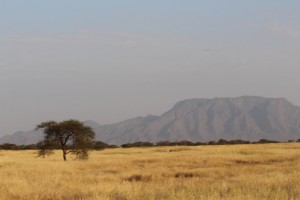
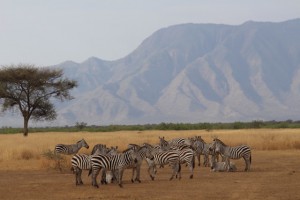
Be the first to reply